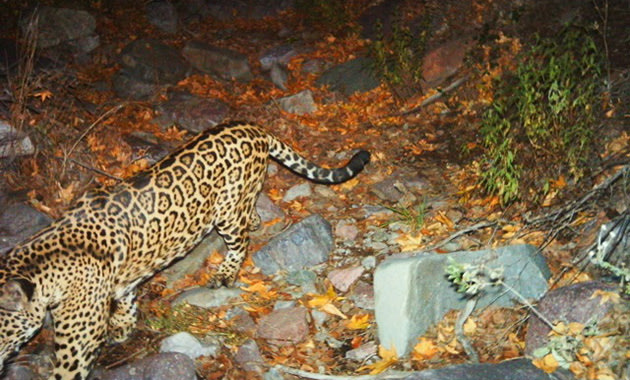From The Sideshow:
Extremely rare jaguar spotted near Arizona mountains

E. Fudd
first time I’ve been there, surely won’t be the last – that weasel story is so touching…..
E. Fudd
Sounds like a winner to me!
From TakePart:
The Big Easy’s $1 Million Plan to Recycle Oysters
E. Fudd
In this case, rhinos, who need all the help they can get these days!
Rhino Drones: Google Backs Poacher Surveillance
Drones Watch Out for Rhino Poachers in Kenya
Rhino Poaching to be Stopped by Surveillance From the Sky
E. Fudd


E. Fudd
The last thing I want to see is some d*** drone buzzing around my wilderness hike or campsite? Time for a bevy of bottle rockets at the ready, just in case… 🙂
E. Fudd
Let’s hope she makes the right ones…!
from The Seattle Times…
Stewardship is under pressure as Jewell takes over Interior
E. Fudd
From AP / Yahoo News:
Rare island fox rebounds on California island
CHANNEL ISLANDS NATIONAL PARK, Calif. (AP) — The rare and tiny island fox is on the verge of making a comeback from near-extinction in the northern Channel Islands, a rugged and wind-swept chain off Southern California, officials said Monday.
The population of the fox dropped to an all-time low of just 70 animals on Santa Cruz Island in 2000 before rebounding to 1,300 foxes now, said Yvonne Menard, a spokeswoman for the National Park Service. Santa Cruz is the largest island.
Populations on nearby San Miguel and Santa Rosa islands have also bounced back into the hundreds after dropping in 1999 to just 15 of the cat-sized animals on each island.
The island fox is only found on six of the Channel Islands, a chain of eight islands, five of which form a national park. Each of the six islands has its own unique fox subspecies because of generations of genetic isolation.
In a five-year period in the 1990s, fox populations plummeted more than 90 percent on the rugged and mountainous islands due to an influx of golden eagles, which preyed on them.
The eagles were attracted by hundreds of feral pigs that also made easy prey and were descendants of pigs brought to the island years ago by ranchers.
Four of the six subspecies were listed as federally protected endangered species in 2004, but now biologists say they may soon come off the list.
“The decline of the island fox population was so severe it caused biologists to shift from tracking fox populations to worrying about the fate of individual foxes,” said Channel Islands National Park Superintendent Russell Galipeau.
“We are thrilled with this rapid recovery.”
In 2002, biologists on Santa Cruz Island trapped the few remaining mating fox pairs and kept them in captivity to try to boost their numbers.
At the same time, wildlife officials captured and removed 44 golden eagles from the island between 2000 and 2006 and killed 5,000 feral pigs in a two-year period in a controversial program to restore the native fox population.
Hunters divided the island into five fenced-off zones and shot pigs from the air to eradicate them.
Now, biologists are working to reintroduce bald eagles to the island instead of the golden eagles that had taken their place.
Bald eagles disappeared from the Channel Islands by the early 1960s due to human impacts, primarily pollution. Millions of pounds of the deadly pesticide DDT and other chemicals were dumped in the ocean off the Palos Verdes Peninsula between the 1940s and 1970s.
The chemicals caused bald eagles to lay thin-shelled eggs that either dehydrate or break in the nest.
More than 40 bald eagles — which don’t eat foxes — now call the northern Channel Islands home and this spring there are at least six active nests there.
E. Fudd
E. Fudd